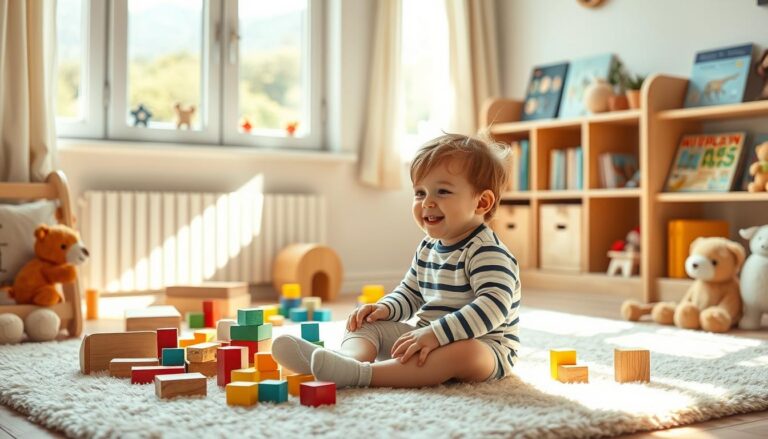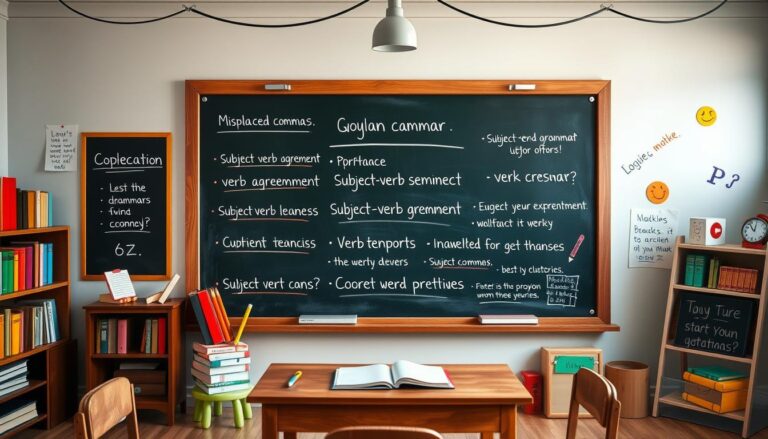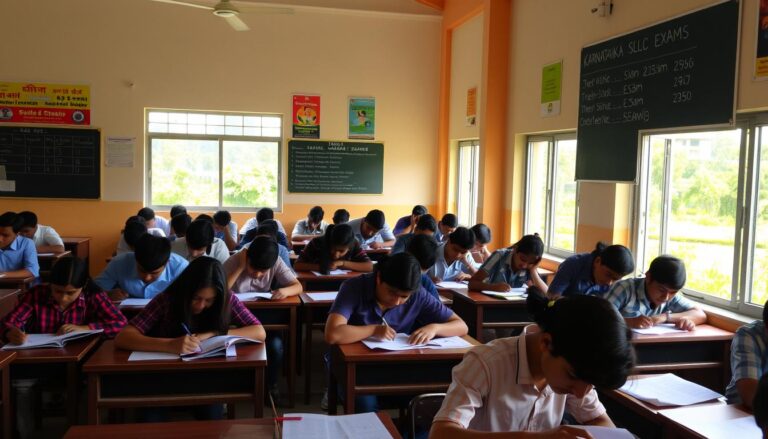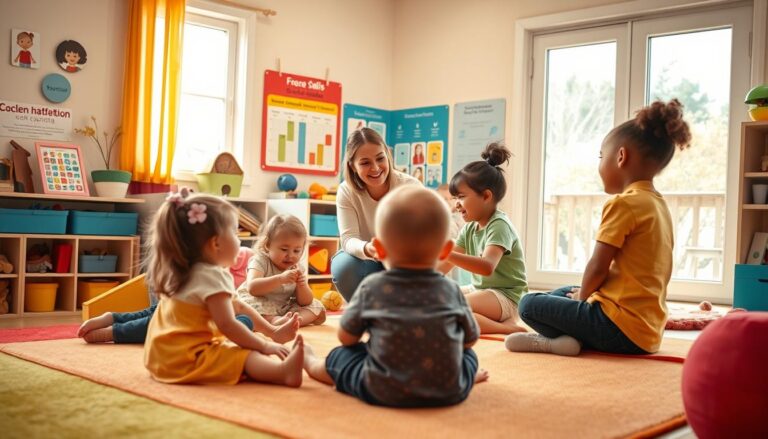Movement Activities for Brain Development
Did you know that simple rhythmic games can significantly boost your child’s brain development? Research shows that combining movement with sound enhances cognitive, physical, and social skills in young learners. This is especially crucial during the early years when the brain is most receptive to growth.
In this guide, we explore how integrating music and movement into daily routines can benefit your child. From improving coordination to fostering creativity, these activities are more than just fun—they’re essential for holistic development. Whether at home or in the classroom, these practices can make a lasting impact.
We’ll share practical tips and engaging ideas to help you get started. Join us as we uncover the science-backed benefits of these activities and how they can shape your child’s future.
Movement for Brain Development
Combining rhythm and physical activity can unlock a child’s potential. Research from institutions like Northern Illinois University and Michigan State University shows that structured movement paired with sound fosters early brain growth. This approach enhances cognitive, physical, and social skills during the critical early years.
Songs, rhythms, and patterns play a key role in stimulating neural connections. For example, clapping to a beat or dancing to a tune helps children develop coordination and memory. These activities are not just fun—they’re essential for holistic development.
Designated “music time” in classrooms and homes creates a routine for engaging musical play. This practice encourages creativity and strengthens group dynamics. Whether it’s singing nursery rhymes or exploring rhythmic patterns, these moments are invaluable for young learners.
In the following sections, we’ll share practical examples and insights from educational research. From interactive preschool programs to DIY activities, you’ll discover how to integrate these practices into daily routines. Let’s explore how music and movement can shape your child’s future.
Why Music is Essential for Toddler Cognitive Growth
Scientific studies reveal that early exposure to sound and rhythm shapes brain development. This connection is especially critical during the formative years, when the brain is highly adaptable. Research from institutions like Millersville University and Michigan State University highlights how rhythmic engagement fosters cognitive, social, and emotional growth in young learners.
Scientific Evidence and Research
Studies show that rhythmic patterns stimulate neural connections, enhancing memory and attention. For example, clapping to a beat or dancing to a tune helps children develop coordination and problem-solving skills. These activities activate the brain’s motor cortex, improving spatial awareness and focus.
Research also indicates that early exposure to rhythm aids language acquisition. Singing simple songs introduces predictable patterns, which strengthen memory pathways. This makes it easier for toddlers to retain and recall information over time.
Real World Benefits for Early Learners
In real-world settings, rhythmic engagement has shown remarkable benefits. Group activities like singing or dancing foster social interaction, teaching children about empathy and turn-taking. These experiences also boost self-confidence and self-expression, which are essential for resilience and self-motivation.
Classroom observations reveal that children who participate in rhythmic activities demonstrate improved listening skills and vocabulary growth. These benefits extend beyond the classroom, shaping well-rounded individuals ready for future challenges.
| Benefit | Impact |
|---|---|
| Memory Enhancement | Strengthens neural pathways for better retention |
| Attention Improvement | Boosts focus and problem-solving abilities |
| Social Skills | Encourages empathy and group participation |
| Language Development | Aids vocabulary growth and phonetic awareness |
Engaging music activities toddlers for Cognitive and Physical Growth
Exploring rhythm and movement can transform how children learn and grow. Whether indoors or outdoors, these activities offer a fun way to enhance both cognitive and physical development. Let’s dive into creative ideas that parents and teachers can use to make learning engaging and effective.
Outdoor and Indoor Options
Outdoor play allows children to explore movement freely. Dancing with scarves or ribbons encourages creativity while improving coordination. Indoors, using simple instruments like shakers or drums can create a rhythmic environment that stimulates focus and memory.
Here are some ideas for both settings:
- Outdoor: Organize a group dance session with props like hoops or balls.
- Indoor: Create a mini orchestra using household items as instruments.
Incorporating Movement into Play
Movement is a natural way for children to express themselves. Activities like freeze dance or call-and-response games teach rhythm and listening skills. Adding props like scarves or ribbons makes these exercises even more engaging.
For example:
- Use scarves to mimic wind or waves during a dance routine.
- Play a game where children mirror each other’s movements to build social skills.
These activities not only promote physical health but also enhance cognitive abilities.
Movement Games That Enhance Spatial Intelligence
Movement games are a powerful tool for developing spatial intelligence in young children. These interactive exercises help kids understand space, distance, and direction while improving coordination and balance. By engaging in these games, children learn to navigate their surroundings effectively and develop critical cognitive skills.
Musical Statues and Freeze Dance
Musical Statues and Freeze Dance are excellent for enhancing spatial awareness and balance. In these games, children move to a rhythm and freeze when the music stops. This requires quick thinking and body control, which sharpens their ability to understand their position in space.
To set up, play a lively tune and encourage kids to dance freely. When the music pauses, they must freeze in place. This game not only improves coordination but also teaches kids to respond quickly to auditory cues.
Call and Response Games
Call-and-response games are another effective way to boost spatial intelligence. These games involve giving verbal or visual cues that children must mimic or respond to. For example, you can call out an animal name, and kids must act like that animal while moving in a specific way.
This type of play sharpens listening skills and quick reaction times. It also encourages creativity as children interpret the cues in their own unique way. These games can be easily adapted for both classrooms and homes, making them versatile tools for learning.
By incorporating these movement games into daily routines, parents and teachers can help children develop essential spatial skills. These activities are not only fun but also lay the foundation for better problem-solving and cognitive abilities in the future.
Creative DIY Music and Movement Activities
Engaging children in hands-on projects can spark their imagination and creativity. DIY activities are not only fun but also teach valuable skills like teamwork and resourcefulness. Let’s explore some exciting ways to combine play with learning.
Building DIY Instruments
Creating instruments from everyday materials is a fantastic way to introduce rhythm and sound. For example, empty plastic containers can be turned into drums, while rice-filled bottles make great shakers. These projects encourage children to think creatively and understand the concept of sound.
Here’s a simple guide to get started:
- Use cardboard boxes and rubber bands to craft a guitar.
- Fill empty bottles with beans or lentils to create maracas.
- Decorate your instruments with paint or stickers for a personal touch.
Glow Stick Drumming and Parachute Play
Glow stick drumming combines visual art with rhythmic play, making it a hit with kids. Turn off the lights, hand out glow sticks, and let children drum along to their favorite tunes. This activity enhances coordination and introduces the concept of rhythm in a fun way.
Parachute play is another engaging group activity. Use a large parachute or bedsheet and have children move it up and down to the beat of a song. This encourages teamwork and physical movement while keeping the experience lively and interactive.
Exploring Musical Moods for Emotional Expression
Music has the unique ability to help children express emotions they might not yet have words for. Whether it’s joy, sadness, or excitement, different musical styles can evoke specific feelings. This connection between sound and emotion is a powerful tool for fostering emotional awareness and creativity in young learners.
Connecting Music with Feelings
Research shows that fast, upbeat songs can elevate a child’s mood, while slower, melodic tunes promote calmness. For example, classical music or lullabies can reduce anxiety by up to 75%. By pairing songs with specific emotions, children learn to identify and articulate their feelings more effectively.
Encouraging kids to sing along or move to the rhythm of a song can deepen this connection. Activities like emotional scavenger hunts, where children match songs to their surroundings, enhance emotional awareness. These exercises not only boost creativity but also strengthen communication skills.
Expressive Dance Routines
Dance is another effective way for children to express emotions. Expressive routines that align with the mood of a song allow kids to physically embody their feelings. For instance, slow movements can reflect sadness, while energetic jumps and spins can convey joy.
Group dance activities also foster social skills and cooperation. Studies show that synchronized movements during group play can enhance social interaction by 65%. Families can join in, creating a bonding experience while reinforcing emotional expression.
| Activity | Emotional Benefit |
|---|---|
| Singing along to upbeat songs | Boosts happiness and energy |
| Dancing to slow melodies | Promotes calmness and relaxation |
| Group dance routines | Enhances social skills and teamwork |
| Emotional scavenger hunts | Improves emotional awareness |
By integrating these practices into daily routines, parents and educators can help children explore and express their emotions in a healthy, creative way. Music and dance are not just fun—they’re essential tools for emotional growth.
Developing Motor Skills Through Action Songs
Action songs are a fun and effective way to help children build essential motor skills. These structured activities combine movement with rhythm, making them ideal for improving coordination and body awareness. Whether at home or in the classroom, they provide a playful yet purposeful approach to physical development.
Action Songs for Coordination
Classic songs like “Head, Shoulders, Knees and Toes” are excellent for targeting specific body parts. By following the lyrics, children learn to identify and move their hands, feet, and other limbs with precision. This not only enhances coordination but also strengthens their understanding of spatial relationships.
Here are some practical ways to incorporate these songs:
- Use clapping or marching to reinforce rhythm and timing.
- Encourage children to mimic movements, such as hopping or balancing, to improve gross motor skills.
- Introduce fingerplays like “Where is Thumbkin?” to focus on fine motor skills.
Rhythm Games for Beat-Matching
Rhythmic games are another effective tool for developing motor skills. Activities like clapping to a beat or tapping along to a nursery rhyme help children internalize rhythm. These exercises also improve listening skills and hand-eye coordination.
For example:
- Play a simple drumming game where children match the beat of a song.
- Use call-and-response techniques to encourage active participation.
- Incorporate props like scarves or ribbons to make the activity more engaging.
| Activity | Skill Developed |
|---|---|
| “Head, Shoulders, Knees and Toes” | Body awareness and coordination |
| Clapping to a beat | Rhythm and timing |
| Fingerplays | Fine motor skills |
| Marching or hopping | Gross motor skills |
By integrating these action songs and rhythm games into daily routines, we can support children’s physical and cognitive growth. These activities are not just enjoyable—they’re essential for building a strong foundation for future learning.
Using Nursery Rhyme Choreography to Spark Creativity
Structured choreography can turn simple nursery rhymes into powerful learning tools. By combining movement with storytelling, children develop creativity, coordination, and cognitive skills. This approach is especially effective in group settings, where patterned movements enhance enjoyment and learning.
Choreographing nursery rhymes helps children connect physical actions with the lyrics of a song. For example, acting out “The Itsy Bitsy Spider” with hand movements teaches rhythm and storytelling. These activities are not only fun but also foster a deeper understanding of patterns and sequences.
Step-by-Step Choreography Tips
Here’s how to create engaging choreography for common nursery rhymes:
- Start with simple movements, like clapping or swaying, to introduce rhythm.
- Use hand gestures to represent key elements of the story, such as mimicking a spider climbing.
- Incorporate group activities, like forming a circle for “Ring Around the Rosie,” to encourage teamwork.
- Add props, such as scarves or ribbons, to make the movements more dynamic.
These steps help children internalize the rhythm and meaning of the song while enhancing their motor skills.
Bringing Story Lyrics to Life
Creative movements can transform nursery rhymes into immersive experiences. For instance, jumping like a frog during “Five Little Speckled Frogs” makes the story more engaging. This approach not only sparks creativity but also improves memory and focus.
Group coordination is another key benefit. When children move together in a patterned sequence, they learn to listen and respond to cues. This fosters social skills and a sense of unity, making the activity more enjoyable for everyone.
| Nursery Rhyme | Choreography Idea |
|---|---|
| “Twinkle, Twinkle, Little Star” | Use hand motions to mimic stars twinkling. |
| “Row, Row, Row Your Boat” | Pair children to row together in sync. |
| “If You’re Happy and You Know It” | Incorporate clapping, stomping, and jumping. |
| “Old MacDonald Had a Farm” | Act out animal movements with sound effects. |
By integrating these ideas into daily routines, parents and teachers can create a fun and educational environment. Nursery rhyme choreography is more than just play—it’s a pathway to creativity and learning.
Integrating Music and Movement in Daily Routines
Daily routines become more enriching when paired with structured movement and sound. For parents, this means creating moments that blend learning with play. By weaving these practices into everyday life, families can foster growth while strengthening bonds.
Planning Engaging Sessions at Home
Start by setting aside dedicated time for rhythmic play. A morning sing-along or an evening dance session can set a positive tone for the day. Use simple props like scarves or homemade instruments to make these moments interactive and fun.
Here are some ideas to get started:
- Create a daily playlist with songs that encourage movement and participation.
- Incorporate call-and-response games to build listening and coordination skills.
- Use storytelling through movement to make activities more engaging.
Simple Tips for Busy Parents
Even with a packed schedule, small changes can make a big impact. For example, turn chores into a game by adding a rhythmic twist. Folding laundry can become a dance party, or cleaning up can involve a sing-along.
Here are additional strategies:
- Combine movement with learning by counting steps or naming objects during play.
- Encourage group participation by involving siblings or family members.
- Adapt classroom techniques, like freeze dance, for home use.
By making these practices a regular part of the day, parents can support their child’s development while creating lasting memories.
Overcoming Challenges in Implementing Music Activities
Implementing engaging rhythmic exercises can sometimes feel challenging, especially with limited resources. Many educators and parents face obstacles like restricted space or a lack of equipment. However, with creative solutions, we can still provide meaningful learning opportunities for every child.
Addressing Space and Equipment Limitations
Limited space doesn’t have to limit creativity. For example, activities like Freeze Dance can be adapted to smaller areas by reducing movement range. Use simple patterns like clapping or stepping in place to keep the rhythm alive. This ensures that even in tight spaces, children can enjoy the benefits of structured play.
When equipment is scarce, everyday items can become instruments. Empty containers, rice-filled bottles, or even wooden spoons can create rhythmic sounds. These DIY solutions not only save resources but also encourage children to think creatively. Here are some practical ideas:
- Use scarves or ribbons for movement-based exercises indoors.
- Turn household items like pots and pans into drums for rhythmic play.
- Adapt group activities to smaller settings by focusing on seated movements.
Time constraints can also be a hurdle. Short, focused sessions are often more effective than lengthy ones. For instance, a 10-minute dance routine or a quick call-and-response game can help children stay engaged without overwhelming their attention span. By planning ahead, we can maximize the impact of each activity.
With careful planning and a bit of creativity, we can overcome these challenges. Every child deserves the chance to grow through movement and sound, regardless of the constraints we face. Let’s turn limitations into opportunities for innovation and learning.
Maximizing Learning Outcomes with Music and Movement
Classroom environments thrive when rhythmic exercises are seamlessly woven into daily lessons. Research from Millersville University and Northern Illinois University highlights how structured integration of sound and movement enhances both cognitive and physical development. By embedding these practices into lesson plans, educators can create a dynamic and engaging learning experience.
Strategies for Effective Classroom Integration
To maximize learning outcomes, educators can adopt several strategies. First, incorporate rhythmic activities into structured lessons. For example, use clapping or stepping exercises to teach math concepts like counting or patterns. This approach not only reinforces academic skills but also improves coordination and focus.
Second, leverage musical instruments to support learning. Simple tools like drums or shakers can make lessons more interactive. Studies show that children who engage with instruments demonstrate better listening skills and memory retention. Here are some practical ideas:
- Use drums to teach rhythm and timing during language lessons.
- Introduce shakers to explore sound patterns in science classes.
- Encourage group performances to foster teamwork and creativity.
Group work is another essential component. Collaborative activities like call-and-response games or synchronized movements enhance social skills and cooperation. Research indicates that children participating in group musical activities score higher on listening comprehension tests.
Finally, focus on evidence-based practices that optimize development. For instance, pairing songs with movement helps children internalize concepts like sequencing and spatial awareness. These activities also improve fine motor skills and emotional expression.
| Activity | Benefit |
|---|---|
| Clapping exercises | Enhances rhythm and focus |
| Group performances | Boosts teamwork and creativity |
| Instrument play | Improves listening and memory |
| Call-and-response games | Strengthens social skills |
By integrating these strategies into daily routines, educators can create a classroom environment that supports holistic development. Structured rhythmic activities are not just fun—they’re essential for fostering academic and physical growth in every child.
Conclusion
Integrating rhythm and movement into daily life offers profound benefits for a child’s growth. These practices enhance cognitive, physical, and emotional development, making them essential for early learning. Whether at home or in the classroom, they provide a fun and engaging way to foster creativity and coordination.
We encourage families and educators to experiment with the diverse ideas shared in this guide. From simple dance routines to group exercises, these activities strengthen bonds and build essential skills. Research consistently highlights their role in shaping well-rounded individuals.
Let’s embrace these practices to nurture every child’s potential. Together, we can create an environment where learning and joy go hand in hand.







